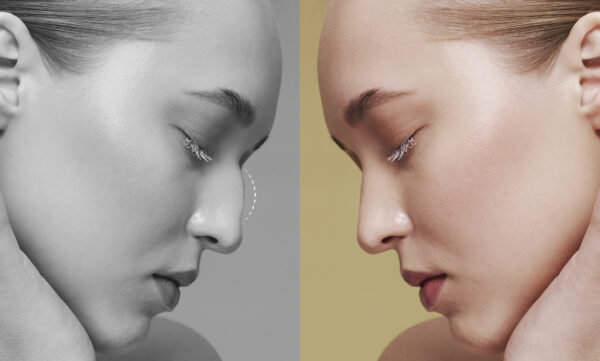
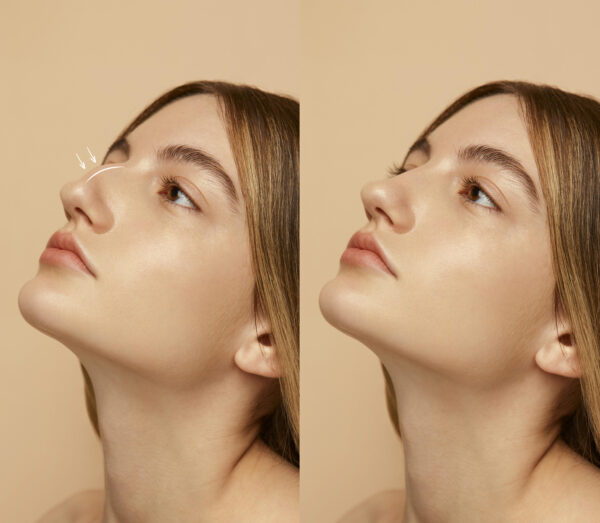

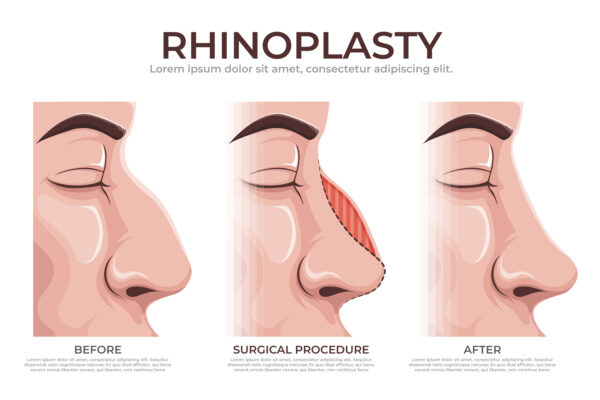
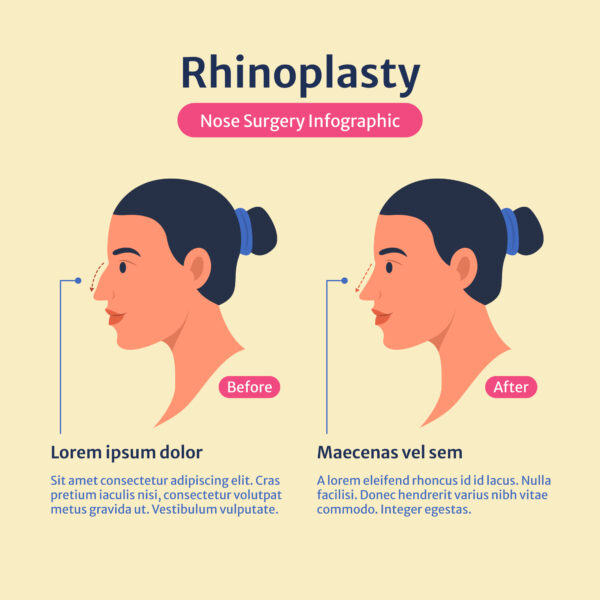
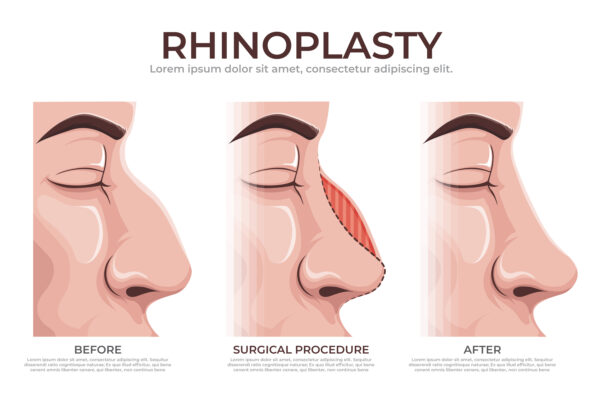
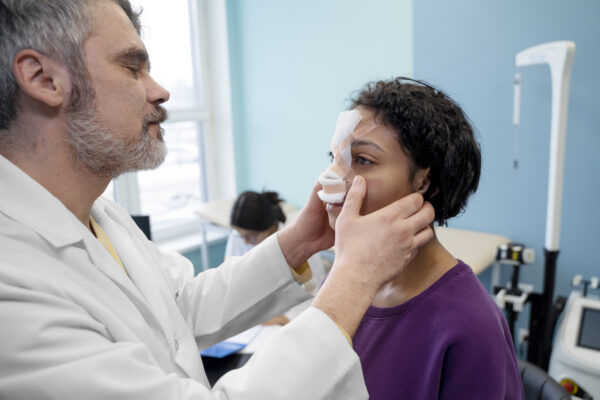
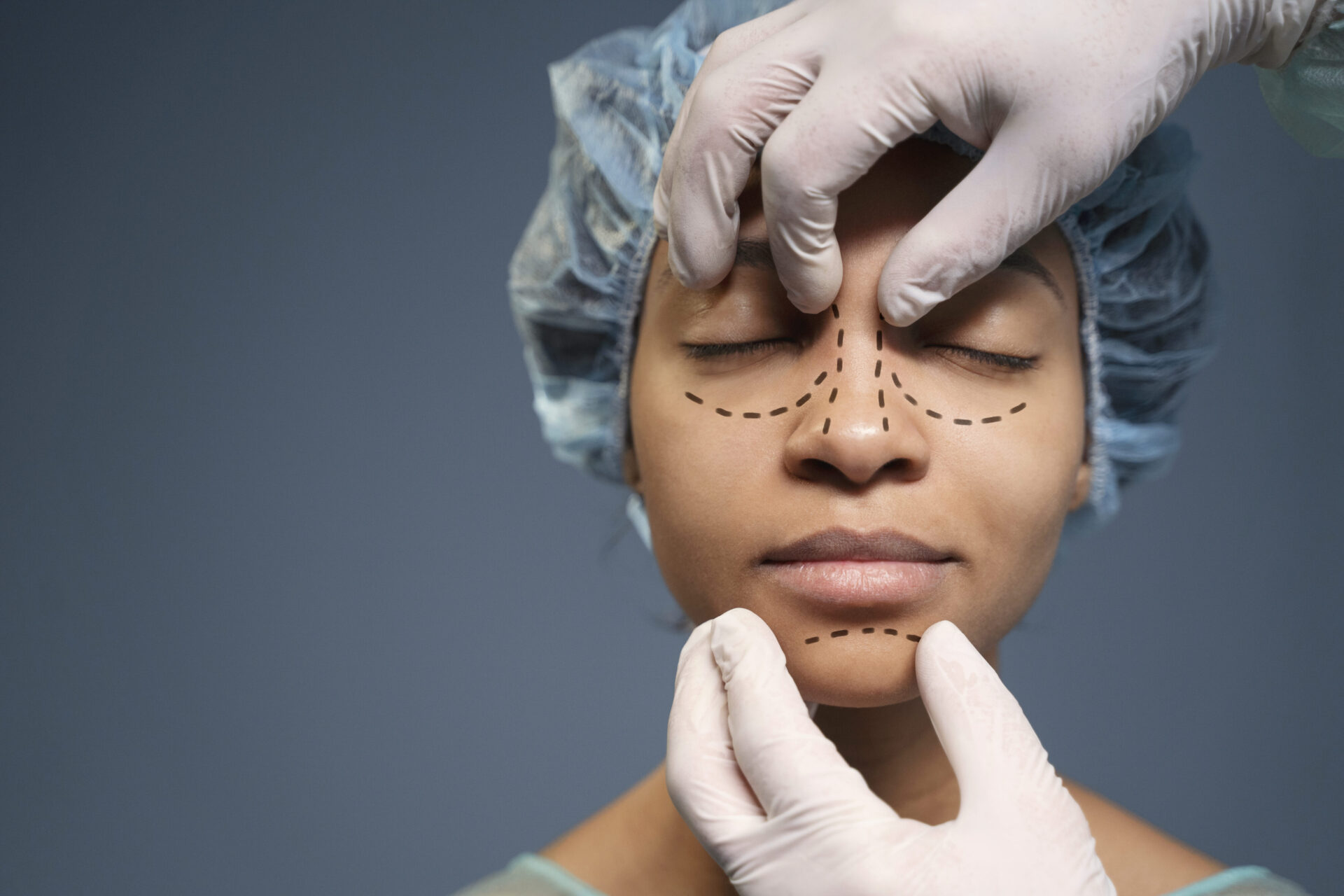
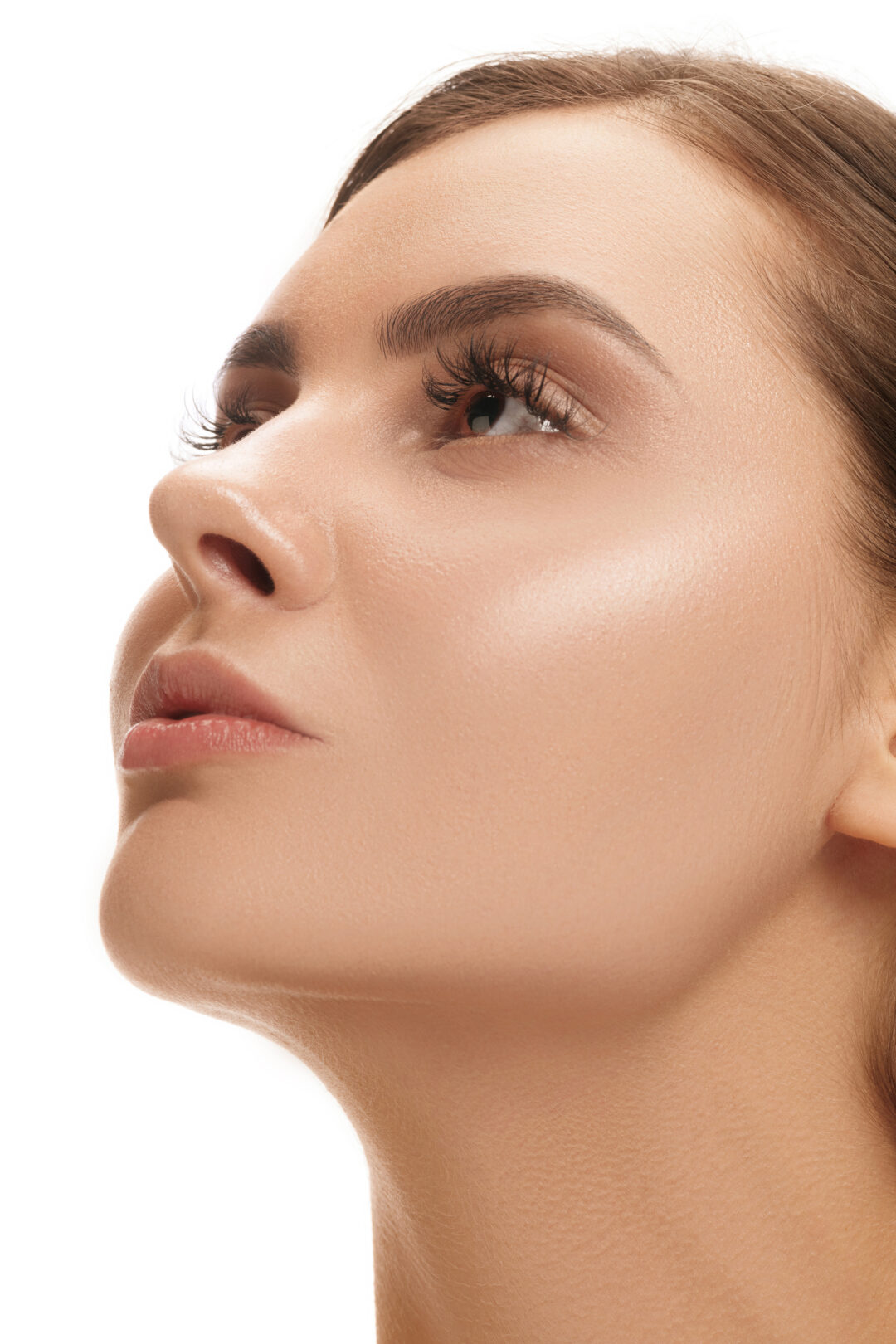



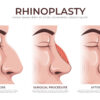
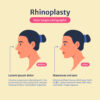
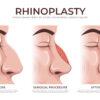
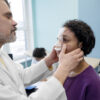
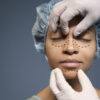
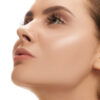

Free
Embark on a transformative journey with our exceptional range of medical treatments. As a leading medical tour operator, we offer a comprehensive selection of world-class treatments and procedures to address your unique healthcare needs. From advanced surgeries to cutting-edge therapies, our team of experienced professionals is dedicated to providing top-notch care and ensuring your comfort and satisfaction. Discover a new level of healthcare excellence with our tailored treatment options. Book now to start your journey towards a healthier and happier you.
Open rhinoplasty is a surgical technique used to modify the shape and structure of the nose. It involves making an incision across the columella, the narrow strip of tissue that separates the nostrils, to gain access to the underlying nasal structures. The procedure provides improved visualization for the surgeon, allowing for more precise modifications and corrections.
Here is a general overview of the open rhinoplasty procedure:
Anesthesia: Before the procedure, anesthesia is administered to ensure your comfort. The options include intravenous sedation or general anesthesia, and your surgeon will recommend the best choice for you.
Incision: In open rhinoplasty, a small incision is made across the columella, which is the external portion of the nose between the nostrils. This incision allows the surgeon to lift the skin and gain direct access to the nasal structures.
Exposure and Reshaping: With the skin lifted, the surgeon can visualize and modify the underlying nasal bones, cartilage, and soft tissues. The surgeon may use various techniques, such as removing or reshaping cartilage, repositioning bones, or adding grafts, to achieve the desired changes in the nose’s shape and structure.
Closure: After the necessary modifications are made, the skin is repositioned and sutured closed. The incision is typically well-hidden and heals with minimal scarring.
Open rhinoplasty is often recommended for complex nasal deformities, revision rhinoplasty, or cases where precise modifications to the nasal tip are required. It allows for a more comprehensive view of the nasal structures, facilitating intricate adjustments.
Open rhinoplasty is suitable for individuals who require extensive modifications to their nose or have complex nasal deformities. It is commonly recommended for the following cases:
Revision Rhinoplasty: Open rhinoplasty is often preferred for revision cases where previous nasal surgeries have been performed. The open approach allows for better visualization and access to correct any previous surgical complications or unsatisfactory results.
Nasal Tumors: Individuals with nasal tumors may benefit from open rhinoplasty as it provides better access to remove the tumor and reconstruct the nose.
Congenital Disabilities: Open rhinoplasty may be suitable for individuals with congenital disabilities such as cleft lip or dermoid cysts, where more extensive modifications and corrections are required.
Nasal Tip Modifications: If the nasal tip requires significant reshaping or modifications, open rhinoplasty may be recommended. The direct access provided by the open approach allows for more precise adjustments to the nasal tip cartilage.
Complex Surgeries: Open rhinoplasty is generally preferred for complex nasal surgeries that involve multiple areas of the nose, such as the septum, dorsum, nostrils, or removal of lumps or bumps.
Open rhinoplasty may not be suitable for everyone, and there are certain situations where an alternative approach may be recommended. Here are some scenarios where open rhinoplasty may not be suitable:
Minor Nasal Modifications: If you only require minor modifications to the nasal tip or other areas of the nose, a closed rhinoplasty approach may be more appropriate. Closed rhinoplasty involves incisions made inside the nostrils, avoiding any external incisions.
Thin or Delicate Skin: Open rhinoplasty involves making an external incision, which can result in more visible scarring. If you have thin or delicate skin, it may be more prone to noticeable scarring, and a closed rhinoplasty approach may be recommended to minimize this risk.
Limited Nasal Concerns: If your concerns are primarily limited to a specific area of the nose, such as the nasal bridge or nasal tip, and do not require extensive modifications to the underlying structures, a more focused approach like tip rhinoplasty or bridge augmentation may be appropriate.
Unfavorable Anatomy: In some cases, the anatomy of the nose may not be suitable for open rhinoplasty. This could include individuals with very thick or sebaceous skin, inadequate blood supply, or previous trauma that has compromised the blood flow to the nose.
Medical Conditions: Certain medical conditions or factors, such as uncontrolled diabetes, bleeding disorders, or compromised immune system, may increase the risks associated with open rhinoplasty. In such cases, your surgeon may recommend alternative options or additional precautions.
Open rhinoplasty offers several advantages compared to other techniques. Here are some of the advantages of open rhinoplasty:
Improved Visualization: One of the main advantages of open rhinoplasty is the enhanced visualization it provides to the surgeon. The open approach allows for direct visualization of the nasal structures, including the cartilage, bones, and soft tissues. This improved visibility enables the surgeon to make more precise modifications and achieve optimal results 1.
Complex Modifications: Open rhinoplasty is particularly beneficial for cases that require extensive modifications or corrections. It allows the surgeon to have better access to the nasal structures, making it suitable for complex surgeries, revision rhinoplasty, or cases involving significant reshaping of the nose 2.
Cartilage Grafting: Open rhinoplasty provides easier access to the nasal cartilage, making it advantageous for procedures that involve cartilage grafting. The surgeon can harvest cartilage from various sources, such as the septum or ear, and use it to reshape or reconstruct the nose 3.
Precise Tip Modifications: The open approach allows for more precise modifications to the nasal tip. It provides a clear view of the nasal tip cartilage, enabling the surgeon to refine its shape, projection, and symmetry with greater accuracy 1.
Better Assessment of Nasal Asymmetry: Open rhinoplasty allows the surgeon to thoroughly examine and address nasal asymmetry. The direct visualization provided by the open approach helps identify and correct any structural imbalances or deviations that contribute to asymmetry 4.
Suitable for Challenging Cases: Open rhinoplasty is often preferred for cases with challenging nasal anatomy, such as thick or sebaceous skin, inadequate blood supply, or previous trauma. The open approach provides better access and control in such situations.
Open rhinoplasty, like any surgical procedure, carries potential risks and complications. Here are some of the complications that can occur with open rhinoplasty:
Scarring: Open rhinoplasty involves an external incision on the columella, which can result in visible scarring. However, with proper surgical techniques and wound care, the scar can often heal well and become less noticeable over time.
Bleeding: Bleeding is a common risk associated with any surgical procedure, including open rhinoplasty. While bleeding during the surgery is managed by the surgical team, postoperative bleeding can occur and may require medical attention.
Infection: Infection is a potential complication of any surgical procedure. Although rare, it can occur after open rhinoplasty. Proper sterile techniques during surgery and postoperative care can help minimize the risk of infection.
Nasal Obstruction: In some cases, open rhinoplasty can lead to nasal obstruction or difficulty breathing through the nose. This can occur due to changes in the nasal structures or excessive scar tissue formation. Nasal obstruction may require additional treatment or revision surgery to address the issue.
Nasal Asymmetry: Despite the surgeon’s best efforts, there is a risk of postoperative nasal asymmetry. This can occur due to factors such as healing patterns, tissue response, or inadequate surgical techniques. Revision surgery may be necessary to correct any noticeable asymmetry.
Altered Sensation: Temporary or permanent changes in sensation, such as numbness or altered feeling in the nasal area, can occur after open rhinoplasty. These changes are usually temporary but can persist in rare cases.
Unsatisfactory Aesthetic Results: While open rhinoplasty aims to achieve desired aesthetic outcomes, there is a possibility of unsatisfactory results. Factors such as individual healing, tissue response, or unrealistic expectations can contribute to suboptimal aesthetic outcomes.
Preoperative care is an essential part of preparing for open rhinoplasty. While the specific instructions may vary depending on the surgeon and individual case, here are some general preoperative care guidelines:
Medication: Follow your surgeon’s instructions regarding medication use before surgery. Avoid medications that can increase the risk of bleeding, such as aspirin, ibuprofen, and other non-steroidal anti-inflammatory drugs (NSAIDs). It is important to inform your surgeon about any medications, supplements, or herbal remedies you are currently taking.
Smoking: Refrain from smoking for at least two weeks before and after surgery. Smoking can delay healing and increase the risk of complications, including poor wound healing and scarring.
Medical Evaluation: Your surgeon may require you to undergo a preoperative medical evaluation to ensure that you are in good health for the procedure. This evaluation may include blood tests, imaging studies, and consultations with other specialists if necessary.
Avoiding Illness: If you develop any signs of illness, such as a cold, flu, or fever, notify your surgeon. Surgery should be postponed until you have fully recovered to minimize the risk of complications.
Preoperative Instructions: Follow any specific preoperative instructions provided by your surgeon. These may include guidelines on eating and drinking before surgery, showering with antibacterial soap, and avoiding certain skincare products or makeup on the day of surgery.
Arrangements for Recovery: Make necessary arrangements for your recovery period. Arrange for someone to drive you home after the surgery and have someone available to assist you during the initial days of recovery if needed.
Postoperative care is crucial for a successful recovery after open rhinoplasty. While specific instructions may vary depending on the surgeon and individual case, here are some general postoperative care guidelines:
Follow Surgeon’s Instructions: It is essential to carefully follow the postoperative instructions provided by your surgeon. These instructions may include wound care, medication usage, and activity restrictions. Adhering to these guidelines will help promote proper healing and minimize the risk of complications.
Nasal Care: Keep the splint and dressings dry as instructed by your surgeon. Avoid blowing your nose for at least two weeks after surgery. If you need to sneeze, do so with your mouth open to minimize pressure on the nose. Your surgeon may provide specific instructions for nasal irrigation or saline sprays to keep the nasal passages clean.
Pain Management: Take prescribed pain medications as directed by your surgeon to manage any discomfort or pain. Over-the-counter pain relievers should be avoided unless approved by your surgeon.
Swelling and Bruising: Swelling and bruising are common after open rhinoplasty. Apply cold compresses or ice packs to the nasal area as instructed by your surgeon to help reduce swelling and alleviate discomfort. Keep your head elevated while resting or sleeping to further minimize swelling.
Rest and Recovery: Allow yourself ample time to rest and recover after surgery. Avoid strenuous activities, heavy lifting, and exercise for the duration specified by your surgeon. Engage in light activities, such as walking, as recommended to promote circulation and aid in healing.
Diet and Hydration: Maintain a healthy diet and stay hydrated to support the healing process. Follow any dietary restrictions provided by your surgeon, such as avoiding certain foods or beverages that may interfere with healing.
Avoiding Sun Exposure: Protect your nose from direct sun exposure for several months following surgery. Apply sunscreen with a high SPF and wear a wide-brimmed hat when outdoors to prevent sunburn and minimize the risk of hyperpigmentation.
Follow-up Appointments: Attend all scheduled follow-up appointments with your surgeon. These appointments allow your surgeon to monitor your healing progress, remove any sutures or dressings, and address any concerns or questions you may have.
Only logged in customers who have purchased this product may leave a review.
Secondary rhinoplasty, also known as revision rhinoplasty, is a surgical procedure performed to correct problems that persist or develop after a previous nose surgery. It aims to address cosmetic issues that were not resolved or functional problems that may have arisen.
The procedure for Secondary Rhinoplasty involves addressing the specific concerns or complications that have arisen following a previous rhinoplasty. This may include modifying the nasal bone, cartilage, and soft tissues to correct asymmetry, improve the nasal profile, or enhance nasal function. The surgical approach and techniques used in secondary rhinoplasty are often more complex due to the alterations made during the initial surgery. The surgeon aims to achieve the desired aesthetic and functional outcomes while addressing any residual issues from the previous procedure.
Secondary Rhinoplasty, also known as revision rhinoplasty, is suitable for individuals who have undergone a previous rhinoplasty and have persistent cosmetic concerns or functional issues that require correction. It is also appropriate for those who seek improvement in the appearance and function of their nose following an unsatisfactory primary rhinoplasty. The procedure aims to address specific defects and may require modifications to different techniques based on the individual’s unique concerns and the outcomes of previous surgeries.
Based on the search results, there are three main factors that suggest who may not be suitable for Secondary Rhinoplasty:
Unrealistic Expectations: Individuals who have unrealistic expectations about the outcome of the surgery may not be suitable candidates for Secondary Rhinoplasty. It is important for patients to have a clear understanding of the potential outcomes and limitations of the procedure.
Multiple Unsuccessful Rhinoplasty Procedures: Patients who have undergone multiple unsuccessful rhinoplasty procedures without clear goals for improvement may not be suitable candidates for revision rhinoplasty. The complexity of the procedure increases with each revision, and it is important to carefully assess the potential risks and benefits for these individuals.
Severe Underlying Health Conditions: Patients with severe underlying health conditions that pose significant surgical risks may not be suitable candidates for Secondary Rhinoplasty. It is important to prioritize the safety and well-being of the patient when considering any surgical procedure.
Based on the search results, the advantages of Secondary Rhinoplasty include:
Correction of Unsatisfactory Results: Secondary Rhinoplasty allows for the correction of unsatisfactory results from a previous rhinoplasty procedure 1. It can address cosmetic concerns and improve the overall appearance of the nose 1.
Improved Functionality: Secondary Rhinoplasty can also address functional issues, such as breathing difficulties, that may have persisted after the initial rhinoplasty 2.
Customized Approach: Each Secondary Rhinoplasty procedure is tailored to the individual’s specific concerns and goals. Surgeons performing revision rhinoplasty have the technical skills and experience to address the unique challenges presented by each case 3.
Enhanced Expertise: Plastic surgeons who specialize in revision rhinoplasty have developed expertise in this specific area. They have experience in identifying and correcting underlying problems that may have contributed to the unsatisfactory results of the primary rhinoplasty 3.
Improved Confidence: Secondary Rhinoplasty can have a positive impact on an individual’s self-confidence and overall well-being. By addressing cosmetic concerns and functional issues, it can help individuals feel more satisfied with their appearance and improve their quality of life.
Based on the search results, there are several potential complications associated with Secondary Rhinoplasty. While the search results provide information on complications related to rhinoplasty in general, it is important to note that the specific complications can vary depending on the individual case and procedure. Here are some examples of complications mentioned in the search results:
Aesthetic Concerns: Secondary Rhinoplasty may present challenges in addressing aesthetic concerns, especially after multiple revision rhinoplasties. Achieving the desired aesthetic outcome can be more complex due to the altered nasal anatomy and scar tissue from previous surgeries.
Functional Issues: Secondary Rhinoplasty can also have functional implications. Internal nasal valve dysfunction is a common secondary complication that can affect nasal airflow and breathing.
Scar Tissue: The presence of scar tissue from previous surgeries can make the procedure more challenging. Scar tissue can affect the healing process and potentially lead to irregularities in the nasal contour.
Poor Scarring: In some cases, poor scarring can occur, both inside and outside the nose. Aggressive scar tissue inside the nose can contribute to an irregular nasal contour, while visible and unsightly scars outside the nose can detract from the overall appearance.
Breathing Challenges: Secondary Rhinoplasty, particularly when the nose is made smaller, can potentially compromise the function of the nose and lead to breathing difficulties. This may manifest as snoring, exercise intolerance, or other breathing challenges.
Based on the search results, here are some preoperative care instructions that may be recommended for Secondary Rhinoplasty:
Avoid Certain Medications: It is generally advised to avoid aspirin, ibuprofen, naproxen, and other non-steroidal anti-inflammatory medications, as well as herbal supplements and Vitamin E, for two weeks before surgery. These medications can increase the risk of bleeding during and after the procedure 1.
Quit Smoking: It is recommended to refrain from smoking for at least two weeks before and after surgery. Smoking can delay healing and increase the risk of complications and scarring 1.
Follow Preoperative Instructions: It is important to carefully follow any specific preoperative instructions provided by your surgeon. These instructions may include guidelines on fasting before surgery, avoiding certain foods or drinks, and taking prescribed medications as directed.
Wear Comfortable Clothing: On the day of surgery, it is advisable to wear loose-fitting clothes that fasten in the front or back. This will make it easier to change into surgical garments and minimize any pressure on the nose during the recovery period 1.
Discuss Medications and Supplements: It is important to inform your surgeon about any medications, supplements, or herbal remedies you are currently taking. They can provide guidance on whether to continue or discontinue these medications before the surgery 1.
Establish a Rapport with Your Surgeon: Building a good rapport with your surgeon is crucial. They will evaluate your specific case, discuss your goals and expectations, and provide personalized preoperative care instructions based on your unique needs.
After Secondary Rhinoplasty, proper postoperative care is crucial for optimal healing and recovery. While the specific postoperative care instructions may vary depending on the surgeon and individual case, here are some general guidelines mentioned in the search results:
Follow Surgeon’s Instructions: It is essential to carefully follow the postoperative instructions provided by your surgeon. These instructions may include guidelines on wound care, medication usage, and activity restrictions.
Manage Pain and Discomfort: After surgery, there may be mild to moderate pain and discomfort. Your surgeon may prescribe pain medications or recommend over-the-counter pain relievers to help manage any discomfort. It is important to take medications as directed.
Protect the Nose: It is important to protect the nose during the initial healing phase. This may involve avoiding any activities that could potentially bump or injure the nose. Your surgeon may provide specific instructions on how to protect the nose, such as avoiding wearing glasses on the bridge of the nose for a certain period.
Manage Swelling and Bruising: Swelling and bruising are common after rhinoplasty. Your surgeon may recommend using cold compresses or ice packs to help reduce swelling and bruising. Keeping your head elevated while resting or sleeping can also aid in minimizing swelling.
Avoid Strenuous Activities: It is generally advised to avoid strenuous activities, heavy lifting, and exercise for a certain period after surgery. Your surgeon will provide specific guidelines on when it is safe to resume normal activities.
Attend Follow-up Appointments: Regular follow-up appointments with your surgeon are important to monitor your healing progress and address any concerns or questions you may have. These appointments allow your surgeon to assess the results and make any necessary adjustments.
There are no reviews yet.
Only logged in customers who have purchased this product may leave a review.
Choosing the right hospital and physician are important factors to consider that significantly influence a patient’s treatment. The preferred choice for many patients is choosing private care.
Choosing the right hospital and physician are important factors to consider that significantly influence a patient’s treatment.
Reviews
There are no reviews yet.